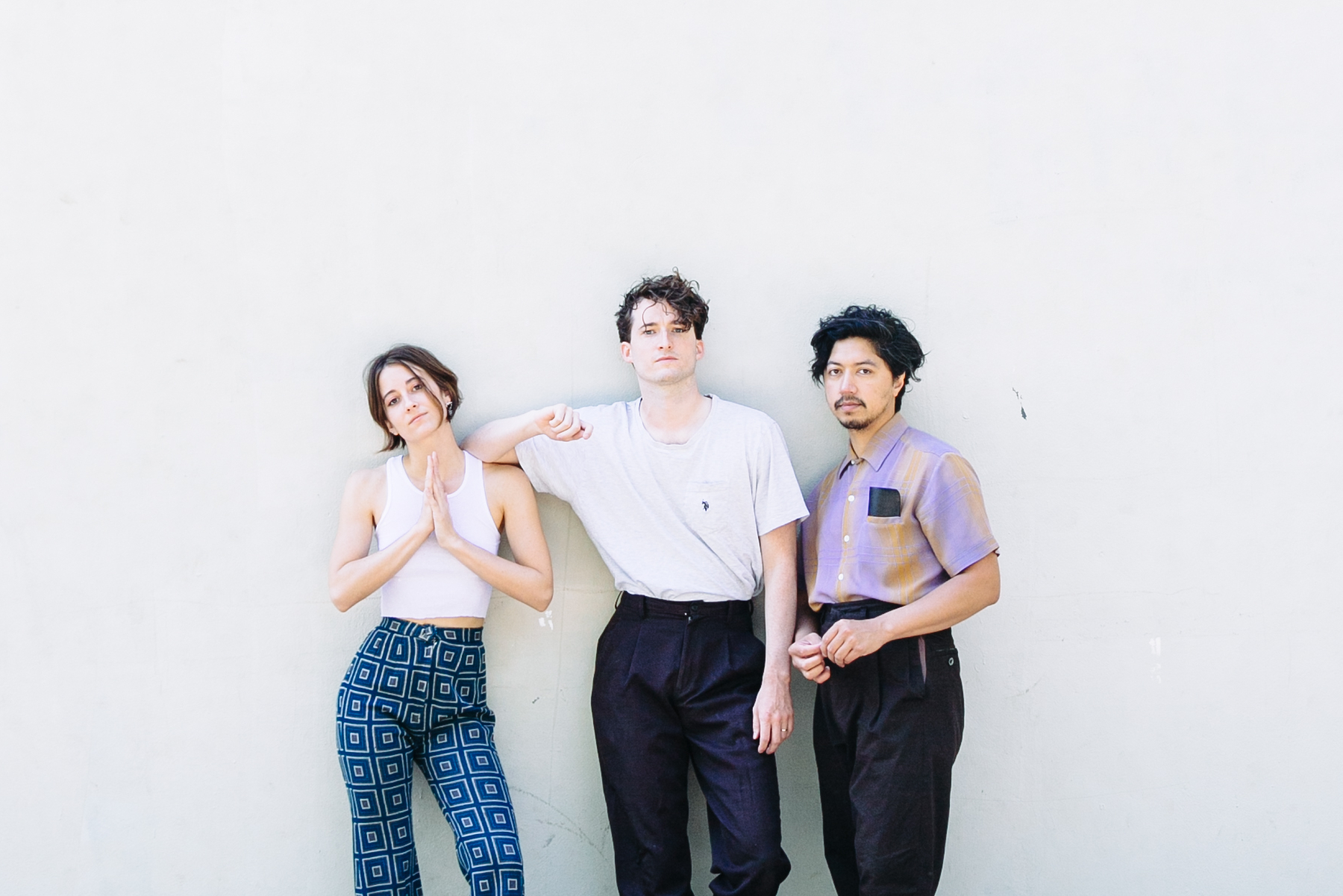‘5 Questions With’: Nation of Language
The 80’s influenced trio goes further back in time with their new LP…
 Photo Credit: Kevin Condon
Photo Credit: Kevin Condon
Nation of Language is known for their 80s aesthetic sound, especially with their first album Introduction, Presence. With their new album ‘A Way Forward’, they step back further in time into the 70s. The trio, Ian Richard Devaney, Aidan Noell, and Michael Sue-Poi, experiments with 70s electronic sounds on the new project.
Equate sat down with lead singer Ian Devaney and talked influences, second album pressure, and the video treatment for ‘The Grey Commute‘.
Read the full interview below…
Words by Robert Frezza
EQ: How did you use 2020’s Introduction, Presence album as a stepping stone for your new album, A Way Forward?
ID: I like to think of them as closely related. With Introduction, Presence it felt more like a curated group of singles and lived a little bit in the 80s synth-pop world. For the second record, I wanted to investigate my relationship to the first album’s influences’ influences, in a way. It was looking more at 70s electronic music, which felt like it had more breathing room and more of an exploratory nature to it. So, while we were making the second record, we wanted to expand people’s ideas of what Nation of Language could be in terms of getting into that space. The first album felt tighter and this new one feels looser. They pair nicely together.
I think it was easier. The first record took a long time to put together. It felt very high stakes. The fact that we couldn’t tour it, as everything was shutting down, we decided to make the second record. There was a bit more confidence because many people liked the first record so much. That approval made things easier. We followed our instincts on album one and we just kept following those same instincts for album two. It felt like there was a more open ending that was more relaxed since there was no tour. It made us breathe a bit easier.
EQ: Does the songwriting come first or does the melody when in the studio?
ID: Usually start with the music and the melody comes when the song has its roots. I help myself steer around the verse and chorus from that initial base. I want to start with melody and lyrics but haven’t done much with that yet.
We were using an analogue soundboard. None of the effects were on the computer. The computer was just there to capture everything we were doing at the moment. On the last two songs on the record, the version you hear is one of the versions that was made and the computer made one take of it. As the synths were going into the computer, we were spinning the delay knobs. All the sounds were changing in real-time as its being brought into the computer. It felt like a live performance but in the studio.
 Photo Credit: Kevin Condon
Photo Credit: Kevin Condon
EQ: Did you listen to anything prior to making this album?
ID: A lot of Kraftwerk, electronic musician Laurie Spiegal, an album between Brian Eno and the band Cluster. Cluster and Eno had very calming moments, which showed up on moments of reprieve throughout our record, which is otherwise a forward motion motoric beat-driven record. We like to have a bit of that spaciness and ambient tendency.
EQ: Where did you get the treatment for ‘The Grey Commute’ video?
ID: The subject matter of the song is about the upside-down nature of some people’s thinking on income, wealth, and equality in the country and how the government should be dealing with it. The subject matter of the song is depressing and absurd, so we decided to make the video absurd and funny.
EQ: You are on the road now?
ID: We just had a week of shows. January we go over to the UK. We haven’t gone on tour in a while, so we decided to go record instead.




